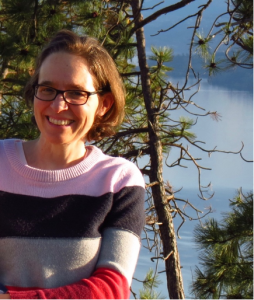 Title: “H2S Biogenesis by the Opportunistic Pathogen, Fusobacterium nucleatum”
Title: “H2S Biogenesis by the Opportunistic Pathogen, Fusobacterium nucleatum”
Dr. Kirsten Wolthers , Associate Professor, Department of Chemistry, University of British Columbia
Abstract: Fusobacterium nucleatum is a Gram-negative oral anaerobic bacterium that has been known for a long time to play a role in the development of periodontal disease. However, numerous studies over the last ten years have established a strong link between F. nucleatum and the progression and pathogenesis of colorectal cancer. In the oral cavity, F. nucleatum is one of the major producers of the respiratory toxin, H2S. In this talk, I will discuss our recent work on the kinetic and mechanistic analysis of two H2S producing enzymes from F. nucleatum. The first enzyme is lanthionine synthase, which uses a PLP cofactor to catalyze the β-replacement of L-cysteine with a second molecule of L-cysteine to form L,L-lanthionine and H2S. This enzyme may prove to be a suitable therapeutic target to treat F. nucleatum infections given that lanthionine replaces diaminopimelic acid in the F. nucleatum peptidoglycan layer. The second enzyme, serine synthase uses PLP to catalyze the β-replacement of L-cysteine with H2O to form L-serine and H2S. This unique enzyme contains an essential Asp residue (Asp232) that enables addition of water to the electrophilic aminoacrylate intermediate. We speculate that this enzyme could be re-designed to form non-canonical amino acids.
Monday, May 3, 2021 at 2:30 pm. Join by Zoom.
Hosted by Dr. Christian Kastrup